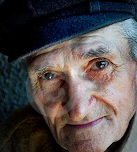“However many or few spiritual bodies we may actually possess is not so essential a question as it may first seem, if we remember that the extraphysical dimensions can appear differently depending on who is looking at them. A spiritual tradition that describes the human being, for example, as having eight bodies (as a number of North American tribes do) is looking at human extraphysical experience form its particular earthly perspective, with that perspective’s particular assumptions and traditions. But whether four in number, or five, or eight, these extrapysical bodies always convey the idea of a central being who manifests through a number of more exterior bodies, each of which is appropriate to a particular level of the multistoried physical-material universe.
“What all these perspectives have common is the insight that, no matter how few or many of these bodies there may be, once each has served its purpose it is no longer a tool but an obstruction, and the core identity seeks to escape from it with the kind of immediate intuition of its uselessness that the Reverend Bertrand so vividly displayed that day in the Swiss Alps. Each body is first a tool and the, if not discarded, a hindrance and an anchor, holding back from where we are supposed to go and preventing us from becoming what we are not supposed to be.
“To leave one body behind is, again universally and regardless of the fine points, to undergo a death that is, at the same time, a birth. When, on the earthly plane, we see an animal emerge from a shed skin, or a butterfly emerge from a chrysalis, what we are seeing is the earthly version of a process that continues to occur in the dimensions beyond this one, an idea that Henry Corbin explained by saying that the world beyond our own symbolize with this world. What this means—and it’s an idea that while at first seemingly alien actually makes a deep intuitive sense—is that the stuff that goes on in the dimensions above this one bears similarity to this one, even when that stuff appears at first glance to be completely unrelated to it. Different as the worlds are, they are levels of one single cosmos, so that what first appears strange will, if we linger with it, eventually cease seeming so.”
Ptolemy Tompkins, The Modern Book of the Dead (Atria Books, 2012), 212-13.










